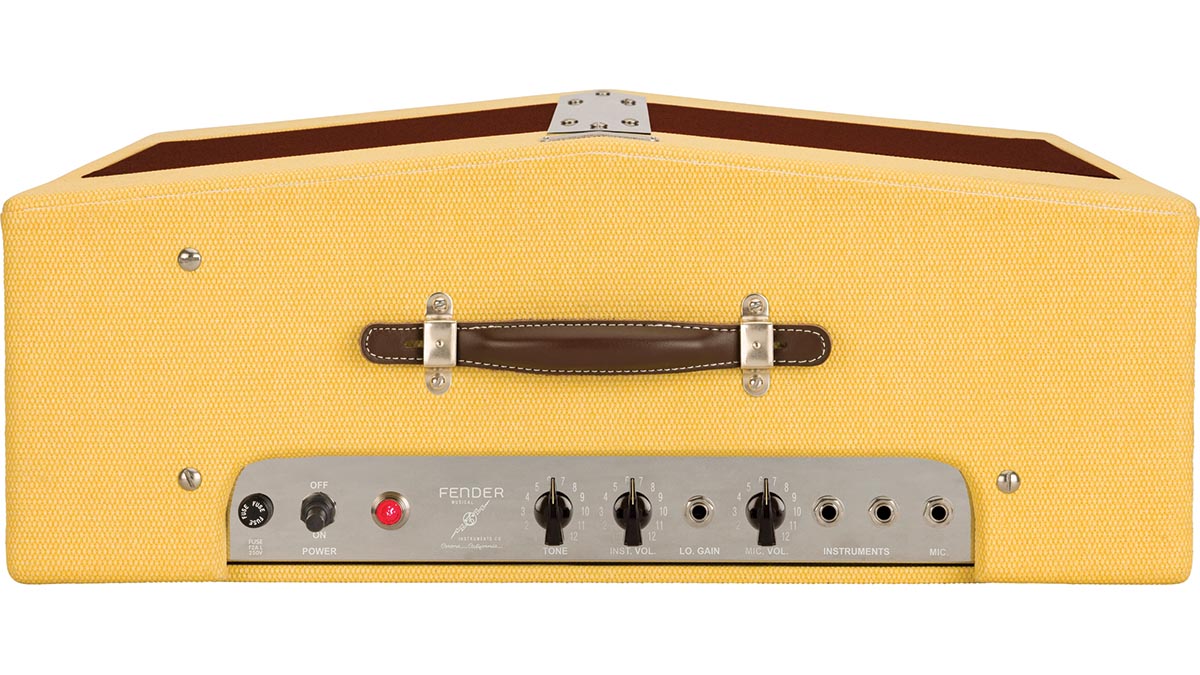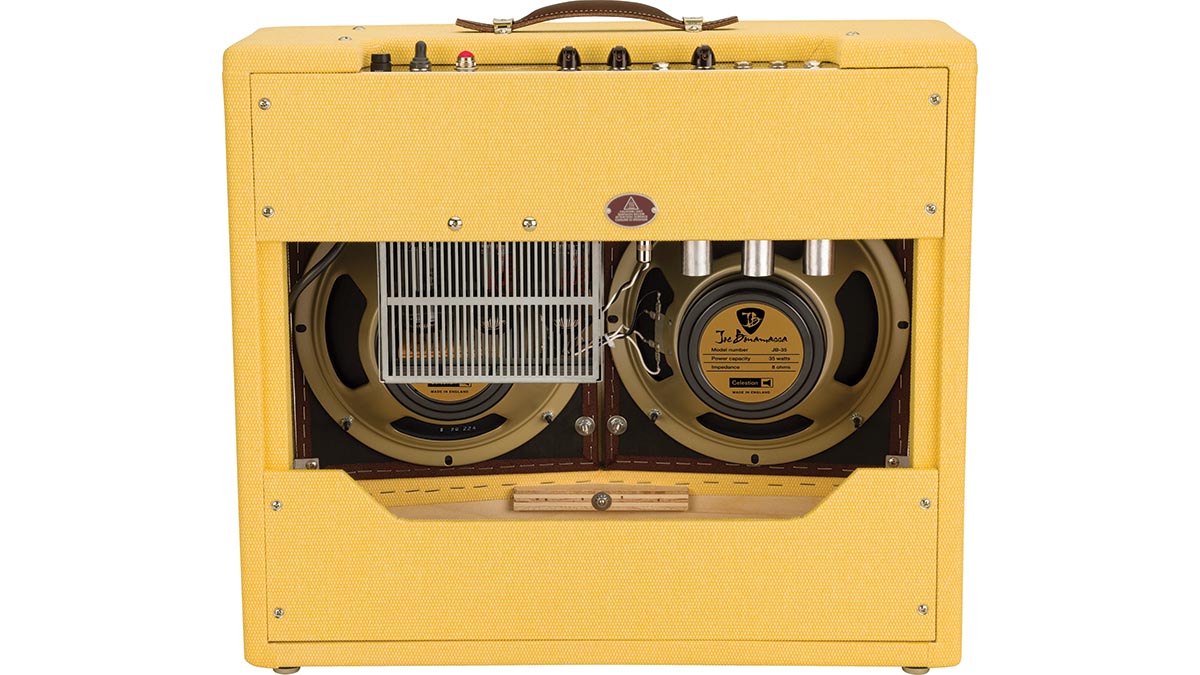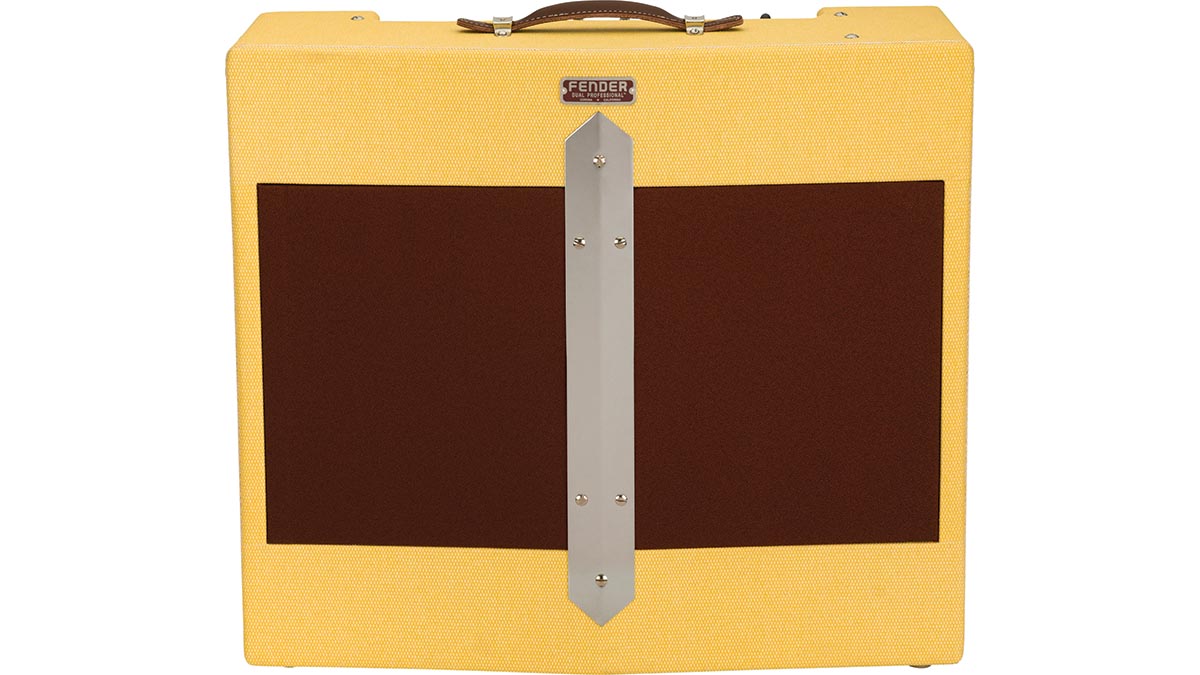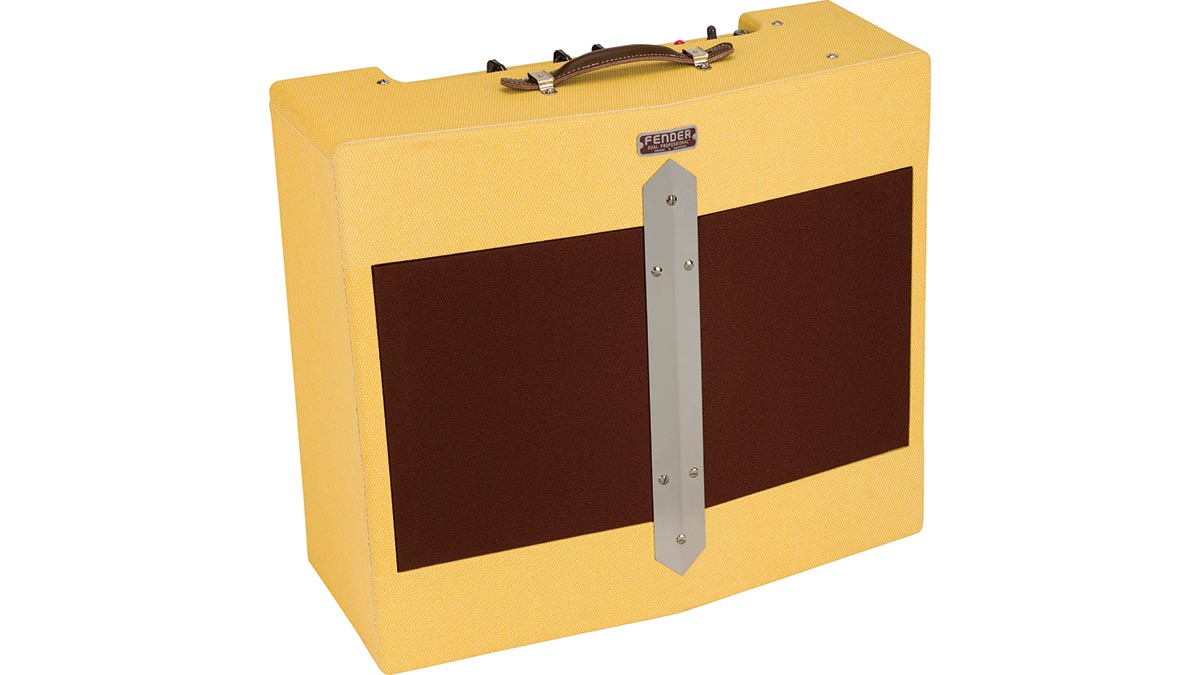Guitar World Verdict
The Fender ’48 Dual Professional JB Edition delivers perhaps the ultimate in tweed tone with impressive volume output and a lightweight, portable format that’s ideal for stage or studio applications.
Pros
- +
Lots of mojo with that tweed tone – and that tweed covering.
- +
It's plenty powerful.
- +
Lightweight.
- +
Ceramic Celestion drivers work a treat in this amp.
Cons
- -
It ain't cheap and only available via JBonamassa.com.
You can trust Guitar World
The Fender Dual Professional guitar amp, introduced in late 1946 and produced until early 1948 when its name changed to the Super, is best known for being the very first electric guitar amplifier featuring two speakers, as well as Fender’s first amp with tweed covering, a top-facing chrome control panel and a finger-joint pine cabinet.
The Dual Professional and its Super model sibling produced from ’48 until 1952, which both featured an angled V-front cabinet with an eye-catching chrome-plated metal strip holding the two speaker baffles in place, were originally designed to amplify lap steel guitars. Predating the rock and roll era, these amps were a little too far ahead of their time and didn’t sell well, so very few were produced.
Fast forward a few decades, and the V-front Dual Professional/Super became a cult favorite amongst vintage Fender amp cognoscenti and seekers of the ultimate electric blues overdrive. Billy Gibbons is an avowed longtime fan (it’s been a secret weapon on many ZZ Top tracks), and thanks to his hoarding tendencies these amps became even harder to find over the years.
More recently, Joe Bonamassa managed to find a sweet 1948 Dual Professional before the Reverend got his mitts on it, and that brings us to the present day and the amp we’re reviewing here: the Fender ’48 Dual Professional JB Edition.
Features

Fender and Joe Bonamassa spent five years developing this very special reissue amp model to accurately replicate the look, tone and responsive feel of the original while using currently available components and meeting modern safety standards.
The current model’s tubes consist of 6L6 power/output and 5U4 rectifier tubes like the original, but instead of octal 6SJ7 preamp and 6N7 phase inverter tubes, which are nearly impossible to find, it uses EF806S and 12AU7 tubes, respectively. Output is rated at 26 watts. The speakers are custom-designed Celestion JB35 10-inch models with ceramic magnets.
The control panel format remains true to the original Dual Professional, featuring master tone, instrument volume and mic volume controls with chicken-head knobs and Lo Gain, Instrument (x 2) and Mic inputs. The Lo Gain input bypasses the Instrument channel preamp tube and also defeats the two Instrument input jacks.
The cosmetics and construction of the original are meticulously replicated with period-correct “white tweed” covering, a solid pine cabinet with split baffle, a leather strap handle and even a replica of the hand-drawn tube chart. The amp is handmade and hand-wired (like the originals) at Fender’s Corona, California, factory and is only available through Joe Bonamassa’s website, and comes with a slipcover.

Performance
I have never played through an original Dual Professional or V-front Super amp, but I have played and owned many different varieties of Fender tweed amps. To my ears, this amp combines the harmonically rich overdrive of a narrow-panel Deluxe with the midrange growl of a 4x10 Bassman and the dynamic punch of a tweed Twin.
Whereas many tweed Fender amps have rather loose, fuzzy and woolly bass, the Dual Pro maintains nicely tight definition with just the right amount of “hair” even when popping notes on the low E string. Like a good tweed amp, it starts to overdrive pretty early (with the volume at 4 with humbuckers or 6-7 with Stratocaster or Telecaster single-coils) but at “all out” settings it retains outstanding attack definition and string clarity with an attractive, natural-sounding compression.

The single tone and instrument and mic volume controls interact with more subtlety than they do on a late-’50s Deluxe, but the four inputs provide a much wider range of gain characteristics and overdrive personality. The Lo Gain input is squeaky clean and admittedly a little weak sounding, but the Instrument inputs deliver classic tweed tone.
A shielded dummy 1/4-inch plug is included with the amp, and when it’s plugged into the adjacent Instrument input while a guitar is plugged into the other Instrument jack, the amp’s gain and treble are boosted. The Mic input provides the most gain of all, delivering a sweet, crispy crunch with dazzling metallic string zing.
I applaud Joe’s decision to go with ceramic-magnet speakers over alnicos, as the attack, clarity and definition nicely complements the inherent warmth and darkness of the Dual Professional’s circuit. In short, the JB Edition Dual Professional delivers everything great about a vintage tweed amp while eliminating characteristics that weren’t so great, like noise, flabby low-end and saggy attack.
Specs
- PRICE: $3,499
- ORIGIN: USA
- TYPE: Tube amp combo
- POWER: 26 watts
- TUBES: 12AU7 phase inverter tube, 2x EF806 preamp tubes, 2x 6L6 power tubes
- CONTROLS: Power on/off, Tone, Instrument Volume, Mic Volume
- SPEAKERS: 2x 10" Celestion JB35
- FEATURES: Hand-wired, V-front solid pine cabinet, Four 1/4" inputs (1x Lo Gain, 2x instrument. 1x mic) period-correct "White Tweed" covering
- WEIGHT: 37 lbs. (17 kg)
- CONTACT: Joe Bonamassa
Chris is the co-author of Eruption - Conversations with Eddie Van Halen. He is a 40-year music industry veteran who started at Boardwalk Entertainment (Joan Jett, Night Ranger) and Roland US before becoming a guitar journalist in 1991. He has interviewed more than 600 artists, written more than 1,400 product reviews and contributed to Jeff Beck’s Beck 01: Hot Rods and Rock & Roll and Eric Clapton’s Six String Stories.












